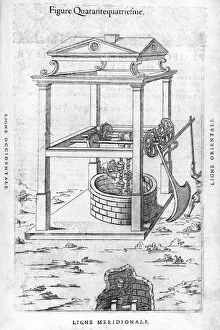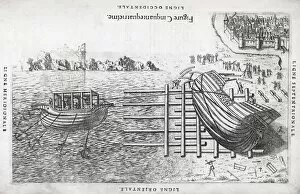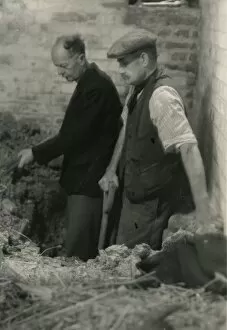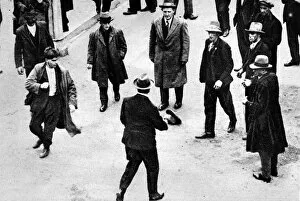Labourer Collection (page 86)
"The Labourer: A Glimpse into the World of Hard Work and Dedication" Step back in time with Harold Harvey's painting "The Clay Pit
For sale as Licensed Images
Choose your image, Select your licence and Download the media
"The Labourer: A Glimpse into the World of Hard Work and Dedication" Step back in time with Harold Harvey's painting "The Clay Pit, " capturing the toil and sweat of labourers as they extract clay from the earth. Transport yourself to a bustling Hong Kong street scene in the 1890s, where C016/4499 showcases labourers immersed in their daily tasks. Witness the sheer strength and teamwork of a four-horse ploughing team at work on South Downs, East Sussex. In Knights Hill during the 18th century, social dynamics come alive as labourers engage in various trades that shape society. Marvel at the determination displayed while making Shoreham Railroad in c. 1840, depicted through a watercolor on paper masterpiece. Explore an intriguing coal riddling workshop set amidst Blanzy's mines around 1860, revealing both skill and perseverance. Travel across waters with a pioneer flatboat on Ohio River circa 1845; witness how laborious efforts pave new paths for progress. Delve into history as an old Kikuyu lady delicately picks coffee beans during the 1960s—a testament to generations of hardworking individuals sustaining livelihoods. Discover innovation through cast iron tunnel lining captured by MTA01_01_16—an emblematic symbol of modern infrastructure built upon countless hours of laborious craftsmanship. Observe a woodcutter diligently working amidst Findon's natural beauty—showcasing man's harmonious relationship with nature. Experience Peter I, The Great overseeing Deptford Dockyard in 1857—an oil-on-canvas portrayal embodying leadership intertwined with manual labor. Uncover King Henry I's visions dreamt in Normandy during 1130-40 through intricate vellum details from MS CCC157 p. 382—a glimpse into medieval perceptions surrounding labor and divine intervention.



























